The Inca Road System: Engineering Marvel of the Ancient World
Imagine a civilization with an intricate network of roads spanning over 14,000 miles, crossing treacherous mountains, deep valleys, and dense forests. Such was the Inca Road System, an extraordinary feat of engineering that remains awe-inspiring even today. This ancient road network, known as Qhapaq Ñan in the Quechua language, served not only as a means of transportation and communication but also played a crucial role in the social, political, and economic fabric of the Inca Empire. Join us on a journey through time as we explore the planning, construction, and remarkable features of this remarkable road system, unraveling its functionality, purpose, and enduring legacy.
Contents
- The Importance of Road Systems in Ancient Civilizations
- The Inca Road System: Planning and Construction
- Features of the Inca Road System
- The Functionality and Purpose of the Inca Road System
- Legacy of the Inca Road System
- Conclusion
-
Frequently Asked Questions
- How extensive was the Inca Road System?
- What purpose did the Inca Road System serve?
- How were the roads constructed?
- What types of features were present along the Inca Road System?
- How did the Inca Empire maintain and repair the roads?
- What impact did the Inca Road System have on trade?
- Did the Inca Road System have religious significance?
- Why did the Inca Road System fall into disrepair?
- How has the Inca Road System influenced modern infrastructure?
- What is the cultural and historical significance of the Inca Road System?
- References
-
Frequently Asked Questions
- 1. How long was the Inca Road System?
- 2. How were the roads constructed by the Incas?
- 3. Were the Inca roads only used for walking?
- 4. How did the Incas manage to build bridges along the road system?
- 5. Did the Inca Road System have resting places?
- 6. What was the purpose of the Inca Road System?
- 7. How did the Inca Road System contribute to the economy?
- 8. How did the Inca Road System impact modern infrastructure?
- 9. Were the Inca roads solely used by the Incas themselves?
- 10. What is the significance of the Inca Road System today?
- References
- Read More
The Importance of Road Systems in Ancient Civilizations
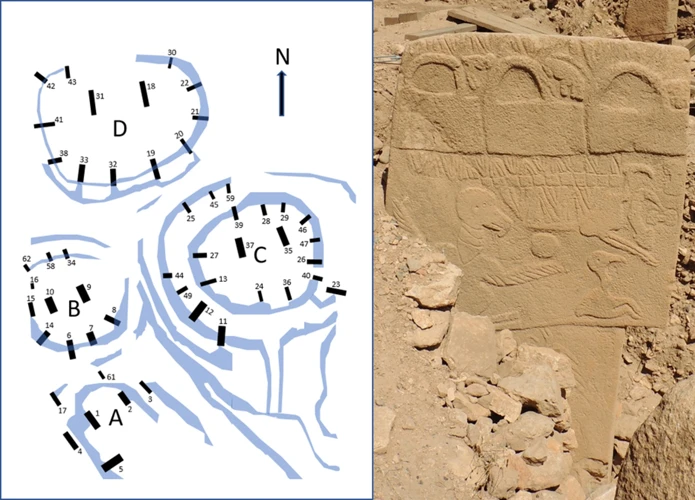
Road systems played a pivotal role in the development and prosperity of ancient civilizations. In the ancient world, roads were crucial for trade, communication, and military purposes. They facilitated the movement of goods, ideas, and people, connecting distant regions and fostering cultural exchange. In ancient civilizations such as the Roman Empire, road networks promoted economic growth and allowed for efficient administration of conquered territories. In the case of the Inca Empire, their extensive road system allowed for effective governance over a vast and diverse territory. These road systems not only physically connected different parts of the empire but also facilitated the flow of information, enabling rulers to maintain control and ensure the smooth functioning of their empires. Roads were the lifelines of ancient civilizations, enabling them to expand their influence, facilitate trade and communication, and assert their power over vast territories. They were the arteries that sustained the lifeblood of these ancient societies, paving the way for their growth and prosperity.
The Inca Empire: A Brief Overview
The Inca Empire, also known as Tawantinsuyu, was a vast and powerful civilization that existed in the Andean region of South America from the 13th to the 16th centuries. At its height, the empire extended across a vast territory, spanning over 2,500 miles along the Andes Mountains, encompassing what is now modern-day Peru, Ecuador, Bolivia, and parts of Chile and Argentina. The Incas were renowned for their organizational skills, engineering prowess, and advanced agricultural techniques. They established a highly centralized state with an emperor, known as the Sapa Inca, at its helm. The empire was divided into four main provinces, each governed by a governor or Apu, who reported directly to the Sapa Inca. The Inca Empire thrived on a system of mutual obligation between the ruling elite and the common people, with the state providing protection, infrastructure, and social services in exchange for labor and loyalty. The society was stratified, with the ruling class at the top, followed by the nobility, skilled artisans, farmers, and finally, the laborers. Religion and spirituality played a significant role in Inca society, with the worship of Inti, the Sun God, and the belief that the Sapa Inca was the Son of the Sun. The Inca Empire was a vast and complex civilization that left an indelible mark on the history of South America. Its remarkable achievements in engineering, governance, and culture continue to captivate and inspire us today. To truly appreciate the marvel of the Inca Road System, it is essential to understand the context of the empire within which it thrived, highlighting the incredible achievements of the Inca civilization.
The Inca Road System: Planning and Construction
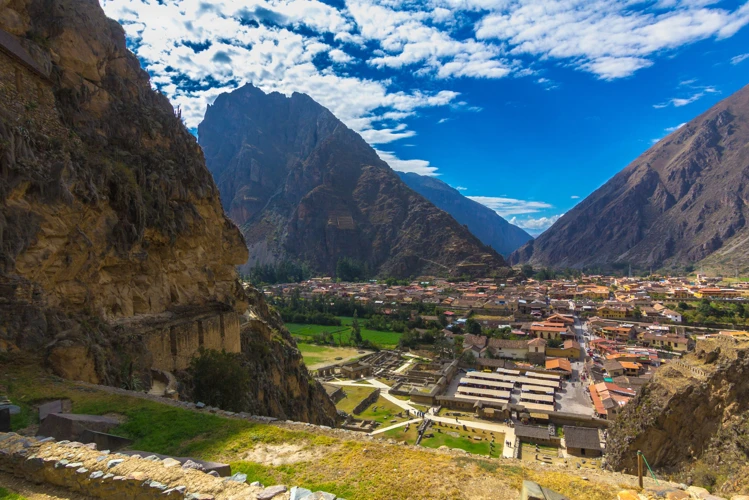
The planning and construction of the Inca Road System stands as a testament to the engineering brilliance of the ancient Incas. Creating a network that spanned thousands of miles and traversed diverse terrains was no small feat. The Incas meticulously planned their roads, taking into account the natural landscape and the needs of their empire. They would carefully survey the land, utilizing a system of ropes and chisels to mark the route. Construction involved the combined efforts of thousands of laborers who would painstakingly clear pathways, level the ground, and build retaining walls and drainage systems. Stones, some weighing over 50 tons, were quarried, shaped, and fitted together with remarkable precision. The result was a road system that could withstand the test of time and the challenges of rugged terrain. The incredible planning and construction techniques employed by the Incas ensured that their road system was not only functional but also a stunning engineering achievement that continues to inspire awe in the modern world.
Engineering Techniques Used by the Incas
The Incas were masterful engineers, using innovative techniques to construct their remarkable road system. One of their notable engineering feats was the use of cut-stone construction. They meticulously carved stones to fit together without the use of mortar, creating perfectly aligned and stable structures. This technique allowed the Incas to build durable and long-lasting roads that could withstand the test of time and the harsh Andean environment. Another engineering technique employed by the Incas was the construction of retaining walls and terraces on steep slopes. By carefully shaping the landscape, they created level surfaces for their roads, preventing erosion and ensuring stability. The Incas also utilized suspension bridges made of woven fibers or ropes, spanning rivers and deep canyons. These bridges showcased their ingenuity and resourcefulness in adapting to challenging terrains. The Incas constructed drainage systems along their roads to manage water runoff, preventing damage and maintaining the integrity of the roadways. Through their advanced engineering techniques, the Incas demonstrated an exceptional understanding of materials, topography, and construction methods. Their engineering prowess was instrumental in creating a road system that withstood the test of time and remains a testament to their ingenuity and technological advancement.
The construction of the Inca Road System was not solely driven by engineering techniques, but it was also deeply influenced by social and political factors. One of the primary reasons behind the extensive road building efforts of the Incas was the need for effective governance and control over their vast empire. The road system helped in the centralization of power by facilitating the movement of armies, messengers, and administrators. It allowed the ruling elite to maintain a close watch over their territories, ensuring the enforcement of laws, collection of taxes, and the swift dissemination of orders. The road system served as a symbol of political authority, showcasing the might and reach of the Inca Empire.
Another significant social factor that played a role in road building was the Inca’s emphasis on reciprocity and community labor. Known as “mit’a,” this system involved the obligatory labor contributions of different communities to the construction and maintenance of the roads. Through this communal effort, the Inca Empire fostered a sense of collective responsibility and encouraged social cohesion among its subjects. The mit’a not only served as a means of constructing physical infrastructure but also as a tool for reinforcing social hierarchies and bolstering the power of the ruling class.
The Inca Road System had a profound impact on social and cultural integration within the empire. The roads facilitated the movement of people from different regions, allowing for the exchange of ideas, customs, and technologies. This interaction promoted cultural assimilation and the spread of Inca ideologies and beliefs. The road system also facilitated the movement of goods and resources, leading to economic interconnectedness within the empire.
The construction of the Inca Road System was influenced by a combination of political and social factors. It was driven by the need for centralized control, the demonstration of political authority, and the fostering of social cohesion. The road system served as a means of governance, symbolized power, and contributed to the cultural and economic integration of the empire, ultimately solidifying the Inca’s hold over their vast territory.
Features of the Inca Road System
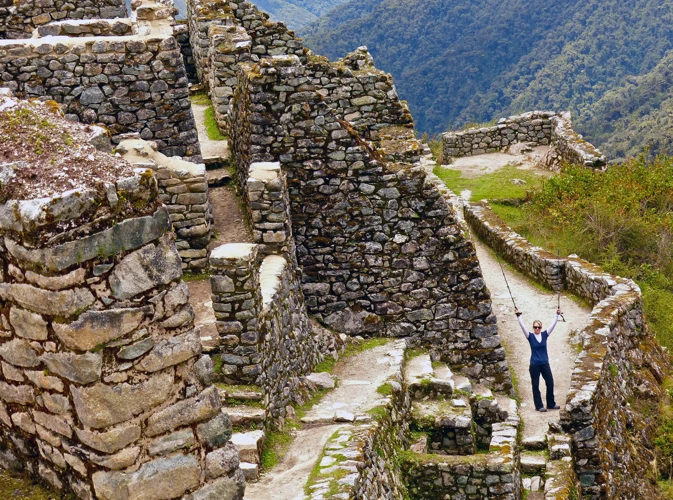
The Inca Road System was a marvel of engineering, boasting several remarkable features. One of the standout features was the main road, known as Qhapaq Ñan, which spanned thousands of miles, connecting the vast Inca Empire. This road was meticulously crafted, incorporating intricate stonework and carefully planned routes that navigated challenging terrains. The Incas also constructed impressive suspension bridges that allowed for safe passage over deep gorges and rivers, showcasing their advanced engineering skills. Along the roads, the Incas strategically placed resting places known as tambos to provide shelter, food, and supplies for travelers. These tambos also served as administrative centers, symbolizing the efficient governance and control of the empire. The Inca Road System exemplified the ingenuity and meticulous planning of the Inca civilization, leaving behind a lasting legacy of awe-inspiring infrastructure.
Qhapaq Ñan: The Main Inca Road
Qhapaq Ñan, also known as the Main Inca Road, was the backbone of the Inca road system and a remarkable engineering achievement. Spanning over 2,500 miles, it connected the vast territories of the Inca Empire, stretching from modern-day Colombia to Argentina. The road was meticulously planned and constructed, with sections varying in width and terrain to accommodate different purposes, such as foot traffic, llamas, and even chariots. The Qhapaq Ñan comprised a sophisticated network of stone-paved paths, suspension bridges, and tunnels, showcasing the ingenuity and advanced engineering techniques employed by the Incas. The road system crossed treacherous mountain ranges, navigated through dense forests, and crossed rivers and ravines with the use of suspension bridges known as chaskiwasi. These bridges were built using locally available materials like grass, wood, and ropes made from vegetable fibers. The precision and durability of these bridges allowed for safe passage and contributed to the longevity of the road system. It is estimated that the construction of Qhapaq Ñan took several decades and involved the labor of thousands of workers. This monumental infrastructure not only facilitated transportation and trade but also served as a symbol of the Inca Empire’s power and grandeur. Today, the Qhapaq Ñan is recognized as a UNESCO World Heritage Site, preserving the legacy of this extraordinary road system and providing insights into the advanced engineering skills and cultural significance of the Incas.
Bridge Construction: A Marvelous Achievement
Bridge Construction: A Marvelous Achievement
One of the most remarkable aspects of the Inca Road System was their advanced bridge construction techniques. The Incas were masters at building sturdy and reliable bridges that spanned over rugged terrains, deep gorges, and turbulent rivers. They ingeniously utilized various materials and engineering methods to create these awe-inspiring structures.
1. Suspension Bridges: The Incas were pioneers in the construction of suspension bridges. They used a technique known as “q’eswachaka” which involved weaving together grass and fibers to form strong cables. These cables were then attached to stone anchors on either side of the river, creating a stable support system. The bridge deck, often made of wooden planks, was then laid across these cables, providing a safe passage for people and goods.
2. Rope Bridges: In addition to suspension bridges, the Incas also constructed rope bridges. These bridges were made by braiding together ropes made from plant fibers. Despite their seemingly delicate appearance, these rope bridges were remarkably strong and could withstand the weight of numerous travelers and heavy loads. The ropes were carefully secured to sturdy anchor points, ensuring the stability and durability of the bridge.
3. Precise Engineering: The construction of Inca bridges required meticulous planning and precise engineering. The Incas carefully evaluated the topography and natural resources of the area to determine the best location for the bridge. They took advantage of natural rock formations or built stone piers to support the bridge structure. The utilization of interlocking stones and precise masonry techniques ensured the longevity of these bridges for centuries.
These magnificent Inca bridges not only facilitated transportation and trade but also served as symbols of Inca engineering prowess and their ability to overcome geographical obstacles. The bridges were meticulously maintained by the Incas, with regular repairs and replacement of worn-out materials. Their durability and functionality were testaments to the Inca civilization’s ingenuity and resourcefulness.
Today, some of these bridges still exist and continue to inspire awe, such as the Q’eswachaka Bridge in Peru. This bridge, which is rebuilt annually using traditional techniques, stands as a testament to the incredible engineering achievements of the Incas.
The Inca bridges remain an extraordinary example of human innovation and perseverance. They showcase the Inca’s deep understanding of their environment and their remarkable ability to manipulate natural materials to create structures of great strength and beauty. The bridge construction methods of the Incas serve as a testament to their advanced engineering skills and their commitment to creating a road system that could withstand the test of time.
Resting Places and Administrative Centers
Resting Places and Administrative Centers
Resting places and administrative centers were an essential component of the Inca Road System. Along the vast network of roads, the Incas strategically constructed tambos and administrative centers at regular intervals, serving multiple purposes. Tambos were resting places designed to accommodate travelers and their accompanying llamas or llamas caravans. These tambos provided shelter, food, and medical assistance, ensuring the well-being of both Inca officials and messengers who traveled long distances. The tambos were equipped with storage facilities, allowing for the safekeeping of supplies and provisions along the routes. They also served as relay stations, where fresh runners would exchange with exhausted messengers, maintaining an efficient and reliable communication system throughout the empire. Additionally, tambos served as administrative centers, overseeing the collection of tribute, monitoring trade, and facilitating the exchange of goods between different regions. This centralized control ensured the smooth functioning of the empire and reinforced the authority of the Inca government. As these resting places and administrative centers played a pivotal role in the success of the Inca Road System, they were meticulously designed and strategically located, ensuring the efficient movement of people, goods, and information across the vast expanse of the empire.
The Functionality and Purpose of the Inca Road System
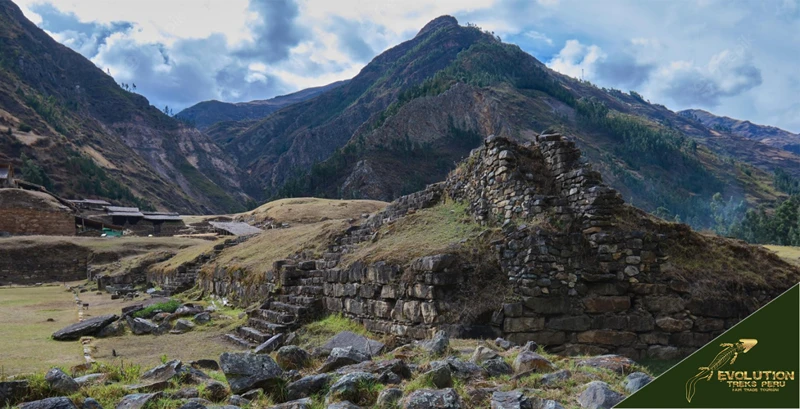
The Inca Road System served multiple functions and purposes within the Inca Empire. Firstly, it facilitated communication and transportation across the vast expanse of the empire. Messengers, known as “chasquis,” relayed information swiftly along the roads, allowing for efficient communication between distant regions and the central government. The roads enabled the movement of troops to swiftly address any threats or maintain control over the empire. Secondly, the road system played a crucial role in trade and exchange. The Incas engaged in an extensive trade network, and the roads served as arteries for the transportation of goods such as textiles, agricultural products, and precious metals. This exchange of goods not only facilitated economic growth but also fostered cultural exchange across the empire. Lastly, the road system had military and defense purposes. The roads allowed for rapid deployment of troops, reinforcing the empire’s security and enabling the Incas to respond to any potential uprisings or invasions efficiently. The functionality and purpose of the Inca Road System encompassed communication, trade, and defense, contributing to the stability and prosperity of the empire.
Communication and Transportation
The Inca Road System was a vital means of communication and transportation within the Inca Empire. The extensive network of roads allowed for the swift exchange of information and messages across vast distances. Runners, known as chasquis, were stationed at intervals along the roads, ready to carry important messages from one part of the empire to another. These highly trained runners could travel at remarkable speeds, ensuring the rapid dissemination of information throughout the empire. The roads also enabled the efficient movement of goods and resources. Llamas, pack animals native to the region, were used to transport goods such as food, textiles, and metals. With the well-constructed and well-maintained roads, the Inca Empire was able to establish a reliable system of communication and transportation, facilitating the smooth functioning of its administration and ensuring efficient governance across its vast territory. These roads were truly the lifelines of the Inca Empire, connecting its various regions and allowing for the exchange of both goods and information, empowering the empire to flourish and thrive.
Trade and Exchange
Trade and Exchange:
Trade and exchange were vital components of the Inca Empire’s economy, and the Inca Road System played a pivotal role in facilitating these activities. The extensive network of roads allowed for the transportation of goods and resources across vast distances, connecting different regions within the empire. Along the roads, there were storage facilities and administrative centers where goods could be stored and managed. This infrastructure enabled the efficient movement of products such as agricultural goods, textiles, metals, and luxury items like gold and silver.
The Inca Empire had access to a wide range of resources due to its diverse geography, including fertile valleys, high-altitude plateaus, and coastal regions. Through the Inca Road System, these resources could be transported and traded across the empire, ensuring a steady flow of essential goods to all corners of the civilization. This exchange of resources promoted economic growth, stability, and the development of specialized industries in various regions.
The road system also facilitated long-distance trade with neighboring societies and cultures. The Incas established trade relationships with surrounding civilizations, such as the Chimú, coastal communities, and even societies beyond the borders of their empire. This trade allowed for the exchange of goods, ideas, and technologies, enhancing cultural exchange and diplomatic ties.
The Inca Road System provided a safe and secure route for traders and travelers. The presence of Inca officials and administrative centers along the roads ensured that trade activities were regulated, taxes were collected, and disputes were resolved. This created a sense of order and stability, fostering confidence among traders and encouraging the growth of commerce.
In sum, the Inca Road System was instrumental in facilitating trade and exchange within the empire and beyond. Its extensive network of roads connected diverse regions, enabled the transportation of goods, and supported economic growth. The system played a crucial role in the Inca Empire’s prosperity by ensuring the availability of resources, promoting cultural exchange, and providing a safe environment for commerce to flourish. Without the remarkable engineering and planning of the Inca roadways, the empire’s economic success and intercultural connections would not have been possible.
Military and Defense
The Inca Road System served a vital role in military and defense strategies of the Inca Empire. The extensive network of roads and strategic locations along the routes allowed for swift mobilization of troops, supplies, and information. These roads acted as a means of communication, enabling military commanders to relay orders, coordinate movements, and respond quickly to any threats or invasions. Additionally, the road system facilitated the transportation of soldiers to key locations, such as frontier outposts and fortresses, strengthening the empire’s defense capabilities.
One key feature of the road system that enhanced military and defense efforts was the construction of fortified structures along the routes. These structures, known as tambos, served as military garrisons, providing a place of rest, shelter, and provisions for Inca soldiers. Tambos were strategically positioned at intervals along the roads, allowing for efficient movement of troops and providing a defensive line against potential invaders. In times of conflict, soldiers could utilize these tambos as bases for launching military campaigns or staging defensive operations.
Another aspect of the Inca road system that contributed to military and defense strategies was its ability to control and monitor the movement of people. The road system included checkpoints, controlled by military personnel, where individuals were required to register and obtain permission to travel. This allowed the Inca Empire to have control over its territories, preventing unauthorized movements and potential threats from outsiders.
The road system enabled the Inca Empire to establish a network of reliable messengers known as chasquis. These chasquis were highly trained and physically fit individuals who could run long distances along the road system, delivering messages in record time. This efficient communication network allowed military commanders to receive and disseminate critical information quickly, enabling them to make informed decisions and respond effectively to any military challenges or emergencies.
In times of warfare, the Inca Road System served as a strategic asset, providing the empire with advantages in terms of intelligence gathering, troop mobility, and defensive capabilities. It played a crucial role in ensuring the safety and security of the Inca Empire, allowing them to defend their territories from external threats and maintain control over their vast domain.
Sources:
– “The Roads of the Inca Empire: A Study of their Architecture and Engineering” by Jean-Pierre Protzen
– “Inca Road System: The Engine of a State” by John Hyslop
Legacy of the Inca Road System
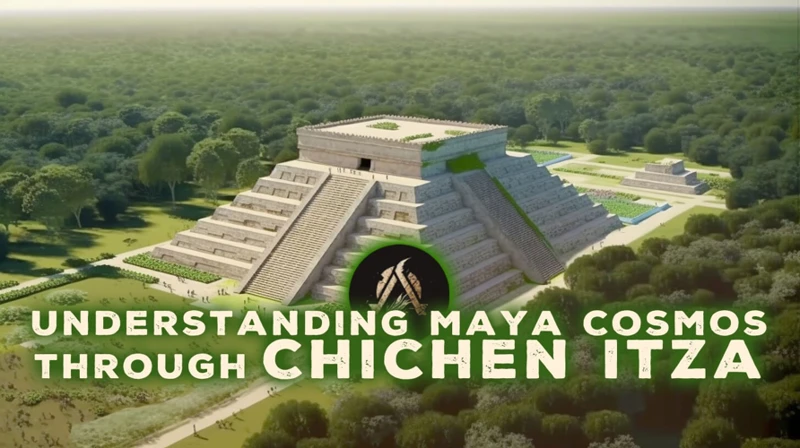
The legacy of the Inca Road System extends far beyond the borders of the ancient empire. Even though centuries have passed since its construction, the impact of this engineering marvel can still be felt today. The road system laid the foundation for modern infrastructure in the Andean region, with many of the original routes still in use. The Inca road network served as a model for subsequent civilizations, inspiring the development of road systems in South America and beyond. Additionally, the cultural and historical significance of the Inca Road System cannot be overstated. It is a tangible reminder of the ingenuity, engineering prowess, and organizational capabilities of the Inca civilization. The road system continues to captivate researchers, historians, and travelers alike, serving as a testament to the remarkable achievements of the ancient world. Its impact transcends time and space, connecting us to a civilization that left an indelible mark on human history.
Influence on Modern Infrastructure
The Inca Road System continues to exert a profound influence on modern infrastructure in the Andean region and beyond. Its enduring legacy can be seen in the planning and construction of roads, bridges, and transportation networks. The Inca engineers’ mastery of designing roads that could withstand harsh environmental conditions has inspired modern engineers to develop durable and resilient infrastructures in mountainous terrains. The concept of integrating roads into the landscape is a key principle that has been adopted in modern highway and urban planning, ensuring minimal disruption to the natural environment. Additionally, the Inca’s advanced knowledge of bridge construction has influenced modern civil engineering techniques, with structures such as arch bridges and suspension bridges reflecting the ingenuity of the Inca engineers. The Inca Road System serves as a testament to the technological prowess of ancient civilizations and its impact on modern infrastructure is a testament to its enduring significance. Through its influence, the Inca Road System continues to shape transportation networks and infrastructure development even in contemporary times, connecting communities and fostering economic growth.
Cultural and Historical Significance
The Inca Road System holds immense cultural and historical significance, transcending its engineering marvel. It serves as a testament to the ingenuity and advanced organizational skills of the Inca civilization. The construction and utilization of such an extensive road network demonstrate the efficiency and sophistication of Inca society. The road system acted as a unifying force, connecting different parts of the empire and facilitating the exchange of goods, ideas, and knowledge among diverse communities. These roads played a vital role in the dissemination of Inca culture, allowing for the spread of their language, customs, and religious beliefs. The road system also served as a tangible symbol of the Inca Empire’s power, showcasing their impressive engineering prowess to neighboring regions. It remains an enduring testimony to the grandeur and achievements of the Inca civilization, providing valuable insights into their history, social structure, and cultural practices. Exploring the remnants of this ancient road system allows us to delve into the rich tapestry of the Inca Empire’s past, preserving their legacy for future generations to appreciate and learn from.
Conclusion

In conclusion, the Inca Road System stands as a testament to the ingenuity, skill, and organization of the Inca civilization. This remarkable engineering marvel played a crucial role in their society, serving not only as a means of transportation and communication but also as a strategic tool for political and military purposes. The extensive road network facilitated trade, exchange, and cultural integration within the empire. It allowed for the efficient movement of goods, ideas, and people, strengthening the empire’s economy and promoting social cohesion. The legacy of the Inca Road System can still be seen today in modern infrastructure and transportation routes in the Andean region. But beyond its practical significance, the Inca Road System holds immense cultural and historical importance. It serves as a reminder of the incredible achievements of indigenous civilizations and their ability to adapt and thrive in complex environments. Exploring the remnants of the Inca Road System offers a glimpse into a bygone era and ignites a sense of wonder at the immense capabilities and accomplishments of ancient civilizations. The Inca Road System is a lasting testament to human innovation and serves as a bridge connecting us to our ancient past. As we marvel at the achievements of the Inca Empire, let us also reflect on the importance of preserving and appreciating the rich cultural heritage that has shaped our world.
Frequently Asked Questions

How extensive was the Inca Road System?
The Inca Road System was incredibly extensive, stretching over 14,000 miles across the vast terrain of the Inca Empire, which encompassed parts of present-day Peru, Ecuador, Bolivia, Chile, and Argentina.
What purpose did the Inca Road System serve?
The Inca Road System served multiple purposes. It facilitated communication between different regions of the empire, allowed for efficient transportation of goods and resources, aided in the administration of the empire, and played a crucial role in defense and military strategy.
How were the roads constructed?
The Inca roads were constructed using a combination of engineering techniques. They were built by hand, with laborers using stone tools to carve through mountains and create terraces. They used a process called ‘mita,’ which involved compulsory labor, where communities were required to contribute to the construction and maintenance of the roads.
What types of features were present along the Inca Road System?
Along the Inca Road System, there were various features that served specific purposes. These included bridges, rest houses known as ‘tambos,’ administrative centers called ‘chasquis,’ and agricultural terraces.
How did the Inca Empire maintain and repair the roads?
The Inca Empire had a well-organized system for maintaining and repairing the roads. Teams of workers known as ‘chaskis’ were responsible for regular maintenance, clearing debris, and repairing any damage caused by erosion, landslides, or earthquakes.
What impact did the Inca Road System have on trade?
The Inca Road System had a significant impact on trade within the empire. It facilitated the movement of goods, resources, and agricultural products, promoting trade and economic exchange between different regions.
Did the Inca Road System have religious significance?
Yes, the Inca Road System had religious significance for the Inca civilization. It connected sacred sites and allowed for religious ceremonies and offerings to occur along the road network.
Why did the Inca Road System fall into disrepair?
After the Spanish conquest of the Inca Empire, the maintenance of the road system declined significantly. The Spanish colonizers did not prioritize the upkeep of the roads, leading to their eventual disrepair.
How has the Inca Road System influenced modern infrastructure?
The Inca Road System has influenced modern infrastructure in the Andean region. Some sections of the ancient road network are still in use today, with modern roads built on top of the Inca foundations. Additionally, the Inca engineering techniques, such as creating terraces and retaining walls, have influenced modern construction practices in the region.
What is the cultural and historical significance of the Inca Road System?
The Inca Road System is of great cultural and historical significance as it represents the remarkable engineering prowess and organizational skills of the Inca civilization. It serves as a testament to their advanced understanding of infrastructure, transportation, and governance.
References
- The Inca Road System: An Architectural Marvel of the Andes
- The Inca Road System: A Marvel of Ancient Engineering (2023)
Frequently Asked Questions

1. How long was the Inca Road System?
The Inca Road System, also known as Qhapaq Ñan, stretched over 24,000 miles (39,000 kilometers) across the Inca Empire.
2. How were the roads constructed by the Incas?
The Incas used a combination of manual labor, engineering techniques, and natural materials like stone and gravel to construct the road system, meticulously building and aligning the roads with great precision.
3. Were the Inca roads only used for walking?
No, the Inca roads were designed to accommodate various modes of transportation. They were wide enough to allow for the passing of llamas, mules, and even runners for long-distance communication.
4. How did the Incas manage to build bridges along the road system?
The Incas utilized a variety of techniques to build bridges, including constructing suspension bridges using natural fibers, ropes, and wooden planks. They were skilled at overcoming challenging terrain to ensure connectivity along the road system.
5. Did the Inca Road System have resting places?
Yes, along the road network, the Incas built resting places called “tambos.” These tambos provided shelter, food, and accommodations for travelers, messengers, and armies.
6. What was the purpose of the Inca Road System?
The Inca Road System served multiple purposes, including communication, trade, and military expansion. It facilitated the efficient movement of people, goods, and information across the vast Inca Empire.
7. How did the Inca Road System contribute to the economy?
The road system played a crucial role in promoting trade and exchange within the Inca Empire. It allowed for the transportation of goods like food, textiles, and precious metals, which contributed to the economic prosperity of the empire.
8. How did the Inca Road System impact modern infrastructure?
The engineering techniques employed by the Incas, such as terracing and stone construction, left a lasting impact on modern infrastructure. Many modern roads in the Andean region still follow the routes of the Inca Road System.
9. Were the Inca roads solely used by the Incas themselves?
While the Inca roads were primarily built and maintained by the Incas, they were also utilized by messengers, traders, and armies from various regions within the empire, creating a network of connectivity and interaction.
10. What is the significance of the Inca Road System today?
The Inca Road System is not only an engineering marvel of the past, but it also holds cultural and historical significance. It serves as a testament to the ingenuity and organizational skills of the Inca civilization and continues to be an important cultural heritage site.
References
- The Inca Road System: A Marvel of Ancient Engineering (2023)
- 9 Engineering marvels of the Inca Empire
- The Inca Road System







